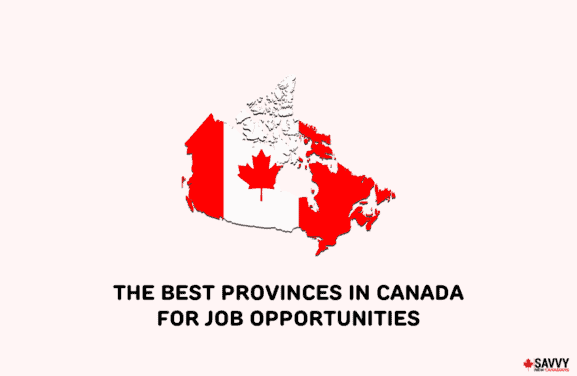Key Takeaways
- The warmest places to live in Canada include West Kelowna BC, Penticton, BC, Toronto, ON, Halifax, NS, Vancouver, BC, Kamloops, BC, and St. Catharines, ON.
- Warmer climates are great, no doubt, but they don’t necessarily equate to the best places in Canada. These places may come with disadvantages like extreme winters, extreme summers, and fewer rental options.
- Canada has eight different climate regions, including Pacific Maritime, Cordillera, Prairie, Taiga, Arctic, South-Eastern, Atlantic Maritime, and Boreal.
Looking for the warmest place to live in Canada? This guide covers the warmest places in winter and summer, plus the cities with the best weather all year round.
Canada is one of the largest countries in the world when it comes to landmass and is only second to Russia in this regard.
The warmest province in Canada would be British Columbia but mainly on the west coast as other parts of the province see some long, cold winters.
The best weather in Canada truly depends on what you like. Although the west coast is the warmest in all of Canada, it’s gray and rainy all winter long.
The summers are moderate as opposed to hot, whereas other areas of the country that experience cold winters also often have long, hot summer days.
If you are looking for the best place to retire or the cheapest location, finding the perfect combo can be challenging.
Comparison Table of Climates Across the Warmest Canadian Cities
| Town/City | Annual Average temp. (°C) | Cost of living (without rent) | Population | Crime Severity Index (CSI) |
| West Kelowna, BC | 7.5 | $978 | 38,311 | 100.37 |
| Penticton, BC | 8.2 yearly, 21 °C in August | $682 | 33,250 | 189.38 |
| Toronto, ON | 8.4 | $1,120 | 2,700,000 | 61.10 |
| Windsor, ON | 10 | $959 | 340,00 | 83.30 |
| Halifax, NS | 7.5 yearly, 25.7 in August | $1,046 | 417,000 | 72.22 |
| Victoria, BC | 9.9 | $1,118 | 393,212 | 157.71 |
| Osoyoos, BC | 8.7 | Lower than national average | 5,556 | 96.90 |
| Oshawa, ON | 8.5 | $1,114 | 406,000 | 44.11 |
| Vancouver, BC | 9.7 | $1,135 | 2,632,000 | 96.90 |
| St, Catharines, ON | 9.7 | $994 | 421,000 | 56.87 |
Snowfall and Cold Weather in the Winter
Winter in Canada can be unpredictable and varies from year to year. While the west coast of British Columbia (BC) is by far the warmest place in Canada in winter, sometimes snowstorms or freezing temperatures can arise.
Other parts of the province see temperatures as low as -20°C for a good few weeks every winter. The eastern part of Canada is traditionally very cold in the winter, with a lot more snowfall.
Canadian winters have a reputation for being freezing cold, and generally, temperatures sit below or at zero degrees Celsius.
The coldest parts of Canada will sit at a high of -5°C with a low of -20°C and experience heavy snowfall in November and December. Areas closest to the ocean will have less snowfall but can still be quite cold.
Weather Types in Canada
The climates vary, and in total, there are 8 different climate regions in the country. This includes:
- Pacific Maritime Climate Region
- Cordilleran Climate Region
- Prairie Climate Region
- Boreal Climate Region
- Taiga Climate Region
- Arctic Climate Region
- South-Eastern Climate Region
- Atlantic Maritime Climate Region
When we mention average yearly temperatures, they may seem low, but remember that it’s an average. Temperatures fluctuate from the high 20s in the summer to the low 20s in the winter, and average yearly temperatures are created based on that as per Climate Data.

Warmest Places To Live in Canada
Below are some of the warmest places to live in Canada:
West Kelowna, BC
- Population: 38,311
- Employment: Agriculture, manufacturing, healthcare, tourism and services, and technology.
- Winter activities: Skiing, snowshoeing, snowmobiling.
- Summer activities: Swimming, wineries, festivals, boating.
West Kelowna is separated by a bridge and links quickly to the main city of Kelowna. There are many orchards here, thanks to the warm climate.
There are also a variety of vineyards nearby with some of the best wines in BC, like Mission Hill and Quails Gate.
West Kelowna is warm and temperate, with rainy months during winter and hot summer days. According to Climate Data, the average temperature yearly is 7.5°C.
| Pros | Cons |
| Warm summer | Crime rates are higher |
| Lakeside living | Some winter days are cold |
| Snowstorms |
Penticton, BC
- Population: 33,250
- Employment: Service industries, trade, agriculture, forestry, manufacturing, and mining. Retail land service center of South Okanagan.
- Winter activities: Cross-country skiing, skate skiing.
- Summer activities: Lakeside, wine country, golfing, hiking.
Penticton may just have the best weather in Canada for its moderate winters and beautiful, dry summers. It is perfect for lakeside living and one of the best places to retire for warm weather.
One of the downfalls here is that it’s a relatively small town, but Kelowna isn’t far away from your big city needs.
The yearly average temperature is 8.2 °C, with an average temperature of 21°C in August.
| Pros | Cons |
| Summer destination | No airport |
| Mild winters | Gray and rainy during winter |
| Outdoor activities all year round | |
| Warm summer days |
Toronto, ON
- Population: 2.7 million
- Employment: Financial services, real estate, and wholesale and retail trade.
- Winter activities: Ice skating, Bentway skating trail, theatre, indoor festivals.
- Summer activities: Boating, outdoor festivals, Toronto islands, cottage country.
Toronto certainly isn’t the warmest or cheapest place to live in Canada; however, it is a warm city compared to other areas of Eastern Canada.
It’s the largest city in Canada, with plenty of things to do all year round. The employment rate is high as there are plenty of jobs.
Winter can be cold but doesn’t often go lower than –20°C. It is considered a warm, humid continental climate.
The average yearly temperature is 8.4 °C.
| Pros | Cons |
| Big city living | Expensive |
| Milder than other parts of Ontario | Not the warmest place in Canada in winter |
| Plenty to do during the winter months | Summers can be very hot |
Windsor, ON
- Population: 340,000
- Employment: Casino, manufacturing engine plants for Ford.
- Winter activities: Ice fishing, winter hiking, ice skating.
- Summer activities: Waterfront trails, beachfront, national park camping, outdoor markets.
Windsor experiences fairly cold winters, but because the summers are so hot, it evens out to an average yearly temperature of 10 °C.
It is one of the warmest and cheapest places to live in Canada. It’s a fairly large city, so even during the winter months, you’ll have indoor activities to enjoy.
Summer begins in June and ends in September, with the summer months being hot and fairly humid.
In the winter, there is some snow but mostly rain, with an average of -4.6°C in January.
| Pros | Cons |
| Hot summers | Cold winters |
| Plenty of outdoor activities in all seasons | Summer days can be too hot |
| National parks |
Halifax, NS
- Population: 417,000
- Employment: Port, agriculture, fishing, and forestry.
- Winter activities: Ice fishing, winter walks.
- Summer activities: Peggy’s Cove, whale tours, beach.
Halifax is quite cold and snowy in the winter but enjoys a long, warm summer, so it evens out with an average yearly temperature of 7.5 °C. Summers can be rainy, but the temperature is moderate.
The Atlantic Ocean brings in some impressive storms during the autumn months, but this in itself is appealing for some.
The warmest month is August, with an average temperature of 25.7 °C, and the coldest month is February.
| Pros | Cons |
| Festive holiday winter season | Cold and windy in the winter |
| Warm summers | Very few winter attractions |
| Beach access |
Victoria, BC
- Population: 393,812
- Employment: Education, marine, construction, health, retail, agriculture, tourism.
- Winter activities: Walking tours, garden tours, horse-drawn trolley rides
- Summer activities: Outdoor markets, outdoor patios, oceanfront outdoor dining.
Victoria is located in the warmest province in Canada, BC. It is generally the warmest climate, as it never gets too hot.
It’s also one of the best places to retire for warm weather in Canada. Winters are so mild that most summer activities can be done even during the coldest months.
The average yearly temperature is 9.9°C with 961mm of rain per year.
| Pros | Cons |
| Moderate temperature all year-round | Expensive |
| Outdoor activities available year-round | High rainfall |
| Limited rental properties |
Kamloops, BC
- Population: 104,810
- Employment: Forestry, mining, retail and agriculture, technology, bioenergy, sustainable industry and tourism
- Winter activities: Downhill skiing, cross-country skiing, snowmobiling.
- Summer activities: Beaches, rivers, lakes, boating, camping.
Kamloops is far from the warmest place in Canada for winter, but generally, it’s usually sunny, even in the dead of winter.
The summer is hot and long, and in recent years, it has been so dry that forest fires have become a major problem. This usually prevents you from going outside on the hottest days of summer.
An air conditioner and pool are common due to the hot summer. The average yearly temperature is 7.4°C with 519 mm of rain annually.
| Pros | Cons |
| Dry, hot summers | Can have very cold winter days |
| Plenty to do in both seasons | Dry climate with very little humidity |
| Many beaches and outdoor activities | Snows a lot in the winter |
| One of the sunniest cities in Canada |
St. Catharines, ON
- Population: 421,000
- Employment: Shipbuilding, mills.
- Winter activities: Outdoor skating, walking, sledding.
- Summer activities: Camping, hiking, mountain biking, amusement parks, Niagara Falls.
In the winter, St. Catharines is cold and temperate, but there usually isn’t much snowfall.
Despite the bitterly cold winters, the annual average temperature is 9.7°C, largely thanks to long, hot summers. July temperatures average 22.7°C, while the coldest temperatures are in January, sitting at around -3.3°C.
| Pros | Cons |
| No major snowfalls in general | Can be cold in winter |
Vancouver, BC
- Population: 2,632,000
- Employment: Tourism, Agriculture, Aquaculture, Forestry, Manufacturing, High Tech, and Education.
- Winter activities: Walking, downhill skiing, biking, indoor theatre events.
- Summer activities: Beaches, festivals, outdoor theatre.
Vancouver is truly one of the warmest places in Canada, but there is also a lot of rain in any given season. Winters are warm, and snow is rare, but it does rain or is, at the very least cloudy for about three months of the year.
Spring is also rainy, but at least the days are brighter. There are plenty of things to do inside, and if you can handle getting wet, you can do outdoor activities all year round.
It’s a beautiful green city with the right amount of humidity. If you love winter activities, you can conveniently visit one of the North Shore mountains.
With the beauty of Vancouver, you can enjoy a warm walk on the seawall downtown while looking up at snow-capped mountains in the distance. The average yearly temperature is 9.5°C.
| Pros | Cons |
| Big-city amenities | Expensive |
| Plenty of job opportunities | Dreary, rainy winter days |
| The warmest place in Canada in winter |
Osoyoos, BC
- Population: 5,556
- Employment: Wineries, agri-tourism activities.
- Winter activities: Baldy Mountain Resort, walk the trails.
- Summer activities: Lake access, beaches, hiking, biking, wineries.
Osoyoos is generally a summer destination and is Canada’s only living desert. Temperatures are milder here, but you can go up to the ski hill nearby in winter easily.
It’s at the southernmost point of the Okanagan Valley region, which is a major summer destination. This area isn’t as well serviced as others on this list, and the town is quite small.
It’s considered a cold semi-arid climate with an average temperature of 8.7°C.
| Pros | Cons |
| Moderate, short winter | Very dry desert climate |
| Rains very little | Small town away from everything |
| All-year-round outdoor activities |
Oshawa, ON
- Population: 406,000
- Employment: Manufacturing railway maintenance equipment, mining equipment, steel fabrication, and rubber products
- Winter activities: Skiing, walking, horseback riding, Parkwood Winterfest
- Summer activities: Botanical gardens, lake access, walking, hiking, horseback riding, camping
Oshawa is cold and temperate with a lot of rainfall, but it does have its perks. It has high employment rates and plenty of outdoor activities to enjoy during the summer months.
Oshawa sits on Lake Ontario, so you have great lake access. As it’s a larger city, indoor activities are available during the winter months.
They have an average temperature of 8.5°C with an annual rainfall of 932mm.
| Pros | Cons |
| Warm summer months | Significant rainfall |
| Not much to do in the winter months |
London, ON
- Population: 515,000
- Employment: Healthcare, finance, education.
- Winter activities: Skiing at Boler Mountain, hiking trails by the Thames River, outdoor ice skating.
- Summer activities: Historical attractions, riverside, Aviaries and zoo, treetop adventure park.
London is warmer than Toronto in terms of winter months. Temperatures range from a low of -9°C during the winter months to no higher than 31°C during the hottest summer days.
It’s reasonably priced to live in London and is a University town. It is north of Lake Erie and a close drive to the US border.
While it may seem cold during the winter, it’s a larger city, so you have indoor options like the theatre, museums, and concerts.
| Pros | Cons |
| Larger city with plenty of amenities | Can hit cold temperatures in the winter |
| Close to the US border | |
| Warm summer days with very little precipitation |
Hamilton, ON
- Population: 776,000
- Employment: Iron and steel
- Winter activities: Ice climbing, tobogganing, snowshoeing.
- Summer activities: Hamilton waterfront, festivals, farm feasts.
Hamilton has very similar weather to Toronto, but it costs much less to live here.
In terms of Ontario winters, it’s much warmer than Northern Ontario. There are plenty of fun winter activities, and while it might get down to -20°C, most days are sitting above 0°C.
Like Toronto, it’s warm and humid, with an average yearly temperature of 8.4°C.
| Pros | Cons |
| Close to Toronto | Long, cold winters |
| Activities all year round | Higher than average summer temperatures |
| Hot summers with very little precipitation |
Related: Cheapest places to live in Ontario.
Lytton, BC
- Population: 210
- Employment: Forestry
- Winter activities: Cross country skiing
- Summer activities: Rafting, hiking, ATV, dirt biking
We are putting Lytton on the list as one of the warmest places in Canada as it holds the record for the highest temperature ever recorded in Canada.
The record high was 49.6°C, which occurred in 2021. Consequently, this was during the 2021 Western North America heat wave, and Lytton burnt down to the ground.
The town evacuated quickly, but currently, there is nothing left of the town, and 210 people were displaced. The average yearly temperature is 3.5°C, which is actually one of the coldest averages on our list despite the hot weeks they experience that are the hottest in Canada.
| Pros | Cons |
| Low precipitation | Cold and temperate in the winters |
| Cheap place to live | Very hot in the summer |
| Hot summers | Small town away from everything |
Conclusion
If you’re looking for the best places to retire for warm weather in Canada, you’re likely to have the most luck in BC.
While it doesn’t hit the hot days that Eastern Canada does, BC has many of the warmest places in Canada in winter. However, they are also the most expensive.
Halifax gets some cold fronts, but their summers are fantastic.
In general, Canadian summer hot spots are usually very cold in the winter. However, they boast fun snow activities that help you pass the long, dark days of winter.
Warmest Places To Live FAQ
Vancouver is the warmest place in Canada in winter. Overall, places like Osoyoos and Penticton have some of the highest average temperatures when it comes to average yearly temperatures. BC is by far the warmest province in Canada.
The best weather in Canada is in Victoria, although it rains a lot. The temperature is moderate and warm all year long, and it’s rare you see snow.
Victoria and Vancouver rarely see snow during the winter months. Sometimes a front will come in, but it’s very rare. Usually, it warms up within a day and melts the snowfall away.
On average, the warmest province in Canada is Ontario. They get hotter summers than BC, so although the winter days might be colder, their summer days are hotter. Ontario has many of the warmest places in Canada in summer.
The sunniest big city in Canada is Calgary, Alberta, with an average of 333 sunny days per year and almost 2,400 hours of sunshine. Other sunny cities in the top 5 are Lethbridge, AB; Medicine Hat, AB; Brooks, AB; and Swift Current, SK.
Related: 15 Best Places to Live in Canada





You quote “Canada is one of the largest countries in the world when it comes to landmass and is only second to Russia in this regard.” This is wrong. Canada is 4th in LAND size, behind Russia, China and the US. IF you include water, yes, Canada is 2nd. Otherwise, if it’s just land, we are 4th. Check these stats. In sq miles; Russia 6,323,142, China 3,624,807, United States 3,531,837, Canada 3,511,022. Thought you may be interested in the facts.